Reference no: EM133083876
Question 1:
A projectile is launched with the initial velocity of 20+XY m/s at the angle of 60 degrees.
I. How long does it take for the projectile to get to its maximum height in Y direction?
II. What is the maximum height of the projectile in Y direction?
III. How far is the location of the maximum height in X direction?
IV. What is the speed of projectile at the maximum height?
V. How long does it take for the projectile to hit the ground?
VI. How far in X direction the projectile can go till it hits the ground?
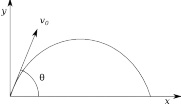
Question 2:
The below uniform bar is at rest. At a moment, the horizontal force P will be applied to Point S. At this moment, what is the angular acceleration of the bar (value and formula based on P, m and L), and acceleration of Point S (value and formula based on P, m and L) if:
• L (length of bar) = 10 + XY m
• m (mass of bar) = 15 + XY kg
• P (force on Point S) = 30 + XY N
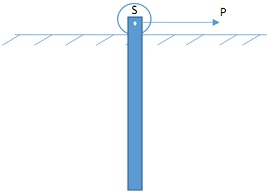
Question 3:
I) Show the free body diagram, then derive the equation of motion in the form of θ¨+Aθ=0, and then the natural frequency (ω).
II) Calculate A and ω if k=200+XY N/m, m=10+XY kg, L=10.XY m, g=9.81 m/s2
III) What happens to the natural frequency of the system if we use it in another planet where the gravitational acceleration (g) is higher than the earth?
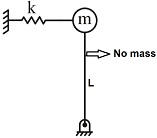
The system shown in below figure is at rest.
I) Demonstrate free body diagram
II) Equation of motion (in meqX¨+ceqX¨+keqX¨=0 format) and natural frequency (ω)
III) If θ=XY/2, m=30.XY kg, k=80+XY N/m and c=90+XY Ns/m, then calculate the natural frequency (ωn), damped natural frequency (ωd) and damping ratio (ζ)
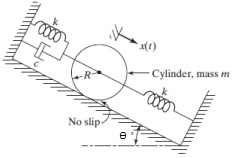
Question 4:
In an epicyclic gear train, a spider arm carries three planetary gears. The number of teeth for C, B and D are 21, 14 and 56 respectively. If spider arm rotates at 150 rpm (anticlockwise), determined the speed of gear D if:
(a) Gear B is fixed (ωB = 0)
(b) Gear B rotates at 300 rpm clockwise
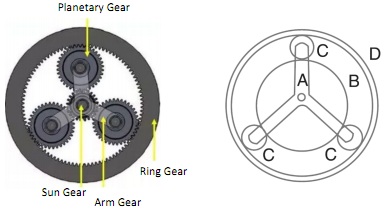
Attachment:- Projectile.rar